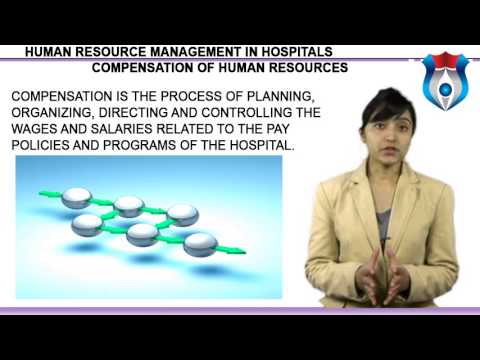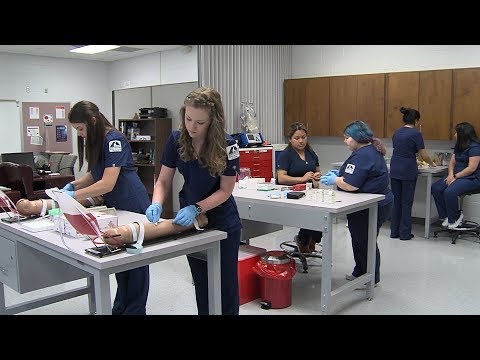Is It Worth Being a Medical Assistant?
Contents [show]
Thinking about becoming a medical assistant? Here’s what you need to know about job satisfaction, salary, and career outlook to help you make the best decision for your future.
Checkout this video:
The Pros of Being a medical assistant
When people are trying to decide on a career, they often weigh the pros and cons of each option. If you’re considering becoming a medical assistant you might be wondering if the job is worth your time and effort. Here are some of the biggest advantages of being a medical assistant to help you make your decision.
One of the main pros of being a medical assistant is that it’s a relatively short program. Most programs can be completed in about one year, which means you can be working in your new career faster than you would with some other jobs in the medical field.
Medical assistants also have a good chance of getting a job after they complete their education. The demand for Medical assistants is high, and it is expected to grow even more in the coming years. This means that if you become a medical assistant, you’re likely to find a job relatively quickly.
Another pro of being a medical assistant is that it can be a relatively low-stress job. While there are certainly some important duties that medical assistants perform, they are generally not responsible for life-and-death decisions. This means that if you’re looking for a job in the medical field that won’t put too much stress on your shoulders, being a medical assistant may be a good option for you.
Of course, every job has its downsides, and being a medical assistant is no exception. One downside is that medical assistants don’t usually make as much money as other jobs in the healthcare field. However, though they may not earn as much as some other jobs in healthcare, medical assistants still earn a good salary. In fact, according to the Bureau of Labor Statistics, the median salary for medical assistants was $33,610 in 2017. This means that half of all medical assistants earned more than this amount and half earned less.
Another potential downside of being a medical assistant is that the job can sometimes be repetitive or tedious. For example, if you work in an office where patients come in for routine check-ups, you may find yourself doing the same tasks over and over again. However, manymedical assistants work in more fast-paced environments where they are constantly interacting with different patients and performing different tasks. So if you’re worried about getting bored as a medical assistant, know that there are plenty of opportunities to find an exciting and challenging position.
Overall, being a medical assistant has many advantages. It’s a fast way to enter the healthcare field, jobs are readily available after completing an education program, and it can be relatively low-stress compared to other jobs in healthcare. Of course, like any job, there are some downsides too but overall beingamedical assistant is definitely worth considering if you’re interestedin workingin healthcare.”
The Cons of Being a Medical Assistant
Although there are many advantages to being a medical assistant, there are also some disadvantages that should be considered before making the decision to enter this career. Some of the cons of being a medical assistant include the following:
-The working hours can be long and irregular, often including evenings and weekends.
-The job can be physically demanding, involving standing for long periods of time and lifting patients.
-The work environment can be stressful, dealing with sick patients and their families.
-The pay is often low, especially for those who have not completed formal training or certification.
The Training Required to Become a Medical Assistant
Medical assistants perform many important administrative and clinical tasks in healthcare facilities. They are a vital part of the healthcare team and play a crucial role in patient care. If you’re thinking of becoming a medical assistant, you’re probably wondering what training is required.
To become a medical assistant, you will need to complete a medical assistant program. These programs are typically offered at community colleges, vocational schools, and some hospitals and universities. Most programs take about one year to complete, although some accelerated programs can be completed in as little as six months.
After completing a medical assistant program, you will need to pass an exam to earn your certification. Once you are certified, you will need to renew your certification every few years by completing continuing education credits.
The training required to become a medical assistant is relatively short, but it is important to remember that this is a demanding profession. Medical assistants must have excellent communication and organizational skills and be able to multitask effectively. They must also be able to maintain confidentiality and work well under pressure. If you are thinking of becoming a medical assistant, make sure that you are prepared for the demands of the job before you commit to the training.
The Job Duties of a Medical Assistant
Medical assistants are crucial members of any healthcare team. They are responsible for performing a variety of administrative and clinical tasks to keep the offices of physicians and other health practitioners running smoothly.
The job duties of a medical assistant can be divided into two categories: administrative and clinical. Administrative tasks may include scheduling appointments, taking patient medical histories, verifying insurance coverage, and handling billing and coding. Clinical tasks may include taking patients’ vital signs, preparing them for examination, assisting with procedures, drawing blood, and administering medications.
The majority of medical assistants work in doctors’ offices, but they may also be employed in hospitals, clinics, or other healthcare facilities. Some medical assistants work independently, while others work under the supervision of a physician or another healthcare practitioner.
Medical assistants must have a strong knowledge of anatomy, physiology, and Medical Terminology They must also be able to perform basic laboratory procedures and take accurate patient histories. In addition, medical assistants must possess excellent communication skills and be able to interact effectively with patients, families, and other members of the healthcare team.
Most medical assistants have at least a high school diploma or equivalent. However, many employers prefer to hire candidates who have completed an accredited medical assisting program. These programs typically last one year and lead to a certificate or diploma. Some Medical Assistants may choose to earn an Associate’s degree in Medical Assisting, which takes two years to complete
The Work Schedule of a Medical Assistant
The work schedule of a medical assistant can be very demanding, as they are often required to work long hours. Medical assistants typically work in hospitals or clinics and are responsible for a variety of tasks, such as taking medical histories and vital signs, scheduling appointments, assisting with patient exams, and providing education about health care
The Salary of a Medical Assistant
The median pay for medical assistants in 2017 was $15.61 per hour, or $32,480 per year, according to the U.S. Bureau of Labor Statistics. The top 10 percent earned more than $21.15 per hour, or $43,930 per year, while the bottom 10 percent earned less than $10.83 per hour, or $22,590 per year.
As with most occupations, experience plays a role in how much medical assistants earn. The more experience they have, the higher their salaries tend to be. Medical assistants with one to five years of experience earned a median salary of $30,780 in 2017, while those with five to 10 years of experience earned a median salary of $34,540. Those with 10 to 20 years of experience earned a median salary of $36,920.
The Career Outlook for Medical Assistants
Absolutely! If you’re looking for a career in the medical field that offers stability, job satisfaction, and the opportunity to help people, then medical assisting is a great option.
Medical assistants are in high demand across the country. The Bureau of Labor Statistics projects that employment of medical assistants will grow 19% from 2019 to 2029, much faster than the average for all occupations.1 With an aging population and advances in medical technology, the need for qualified medical assistants is expected to continue to grow.
Medical assistants perform a variety of important tasks, including taking and recording medical histories, scheduling appointments, preparing patients for examinations, updating records, billing patients, and handling insurance claims. They also collect and prepare laboratory specimens or perform basic laboratory tests on site, dispose of contaminated supplies, and sterilize medical instruments. Many medical assistants take on additional responsibilities as well, such as patient education or managing the front office.
The duties of a medical assistant vary from state to state. Some states allow medical assistants to perform more advanced tasks than others. In general, however, mostmedical assistants have completed a postsecondary education program of either a certificate or an associate’s degree.2 Most programs take about two years to complete and include both classroom and clinical instruction.
The Pros and Cons of Working as a Medical Assistant
The medical assistant profession is one that has seen a lot of growth in recent years. With the aging Baby Boomer population and the Affordable Care Act increasing the demand for health care services, medical assistants are in high demand. But is it really worth it to become a medical assistant? Let’s take a look at some of the pros and cons of working as a medical assistant.
Pros:
-Medical assistants are in high demand. According to the Bureau of Labor Statistics, employment of medical assistants is expected to grow 23% from 2016 to 2026, which is much faster than the average for all occupations.
-You can get started without a lot of education. Most medical assistant programs can be completed in less than two years, and some programs can be completed online or through community colleges.
-You can earn a good salary. The median annual salary for medical assistants was $32,480 in 2016, according to the Bureau of Labor Statistics.
-You can have a flexible schedule. Many medical assistants work part-time or have flexible schedules that allow them to take time off when they need it.
Cons:
-The job can be stressful. Working in a medical environment can be stressful, and you may be required to work long hours or weekends if your office is open late or has extended hours.
-You may have to deal with difficult patients. As a medical assistant, you will be working with patients on a daily basis. Some patients may be rude or difficult to deal with.
-You may not have much opportunity for advancement. Medical assistants typically start out in entry-level positions with little opportunity for advancement unless they go back to school to get additional training or certification.
The Different Types of Medical Assistant Jobs
There are different types of medical assistant jobs, and each one comes with its own set of responsibilities, qualifications, and pay. Here’s a quick overview of the three most common types of medical assistant jobs:
1. Clinical medical assistants: Clinical medical assistants work directly with patients. They take vital signs, collect medical histories, prepare patients for examination, assist the physician during the exam, and schedule follow-up appointments. They may also give injections and perform basic laboratory tests. Qualifications for clinical medical assistant jobs include a high school diploma or equivalent, completion of an accredited medical assistant program, and certification from an accredited organization such as the American Association of Medical Assistants (AAMA). Clinical medical assistants typically earn $14-18 per hour.
2. Administrative medical assistants: Administrative medical assistants handle the non-clinical aspects of running a healthcare practice. Their duties may include scheduling appointments, verifying insurance coverage, billing patients and insurance companies, maintaining medical records and handling correspondence. Qualifications for administrative medical assistant jobs include a high school diploma or equivalent and completion of an accredited medical assistant program. Administrative medical assistants typically earn $12-16 per hour.
3. Specialized medical assistants: Specializedmedical assistants have additional training in a specific area of medicine such as optometry, podiatry, or gynecology. Their duties vary depending on their specialty but may include measuring patients’ vision, fitting them for contact lenses or glasses, taking X-rays, or performing other diagnostic tests. Qualifications for specializedmedical assistant jobs include completion of an accreditedmedical assistant program and certification from an accredited organization such as the American Medical Technologists (AMT). Specializedmedical assistants typically earn $15-20 per hour.
The Best Places to Work as a Medical Assistant
One of the main questions people considering a career as a medical assistant ask is, “Where are the best places to work?” While there are many great places to work as a medical assistant, some states and cities offer better opportunities than others.
The table below shows the states with the highest employment levels for medical assistants, as well as the states with the highest salaries for medical assistants. As you can see, there are many great places to work as a medical assistant, regardless of your preference for location or salary.
State|Employment (2017)|Average Annual Salary (2018)
California|69,860|$37,470
Texas|48,130|$33,710
Florida|47,350|$31,520
New York|39,930|$37,470
Pennsylvania|37,510|$33,280
While there are many factors to consider when deciding where to work as a medical assistant, these data show that there are many great opportunities available in a variety of locations.







